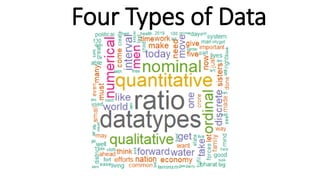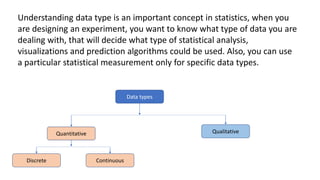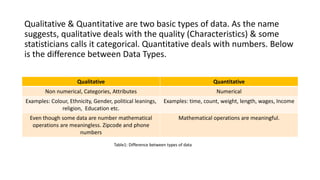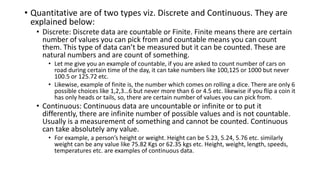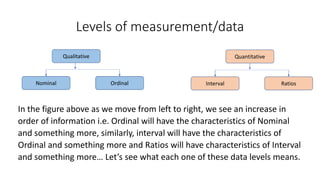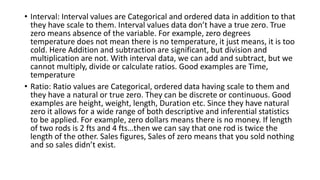The document discusses the four types of data: quantitative, qualitative, discrete, and continuous, explaining their differences and applications in statistics. It highlights the levels of measurement, including nominal, ordinal, interval, and ratio, providing examples for each to illustrate their characteristics and significance in data analysis. Understanding these data types and their classifications is essential for designing experiments and conducting statistical analyses.
